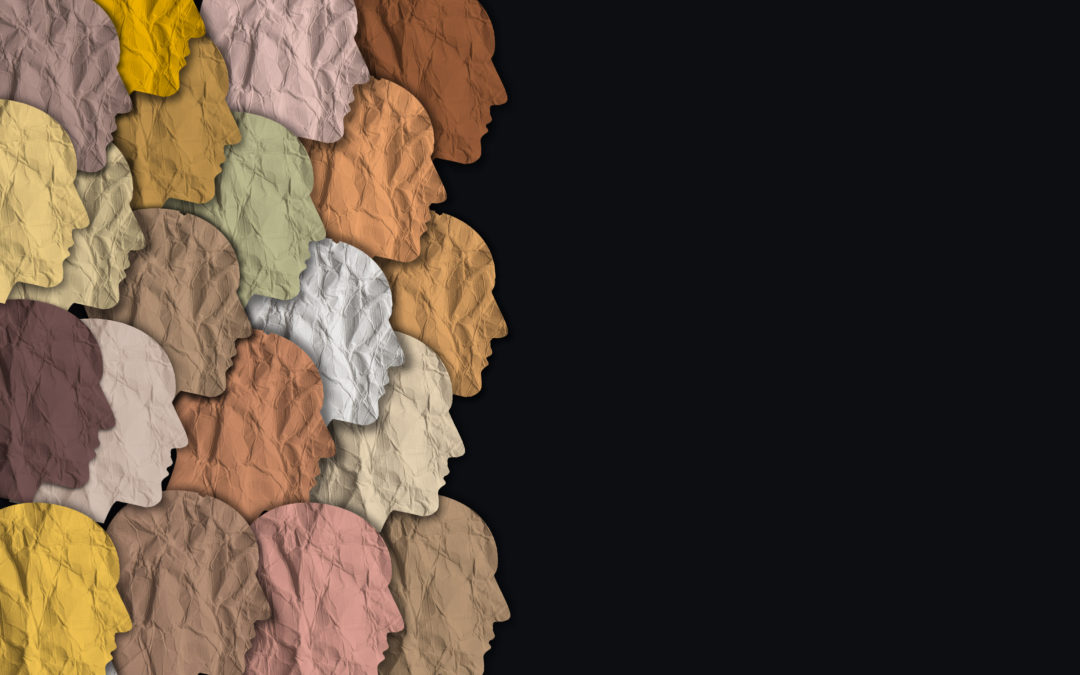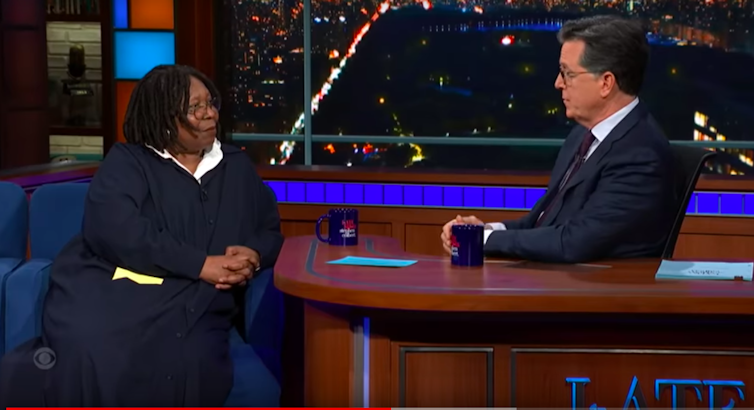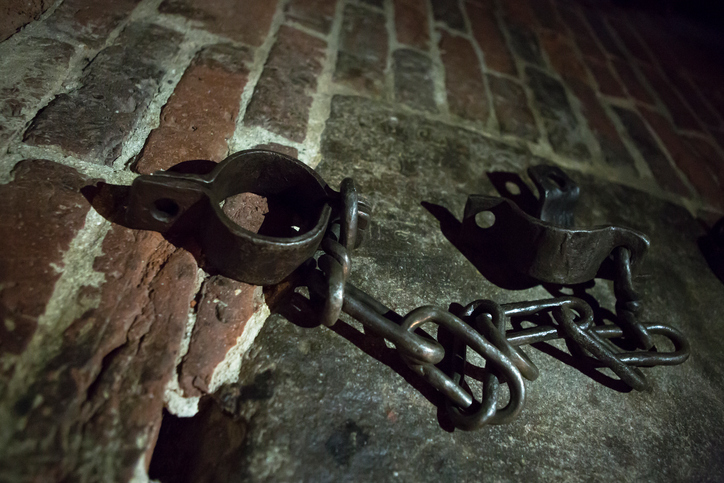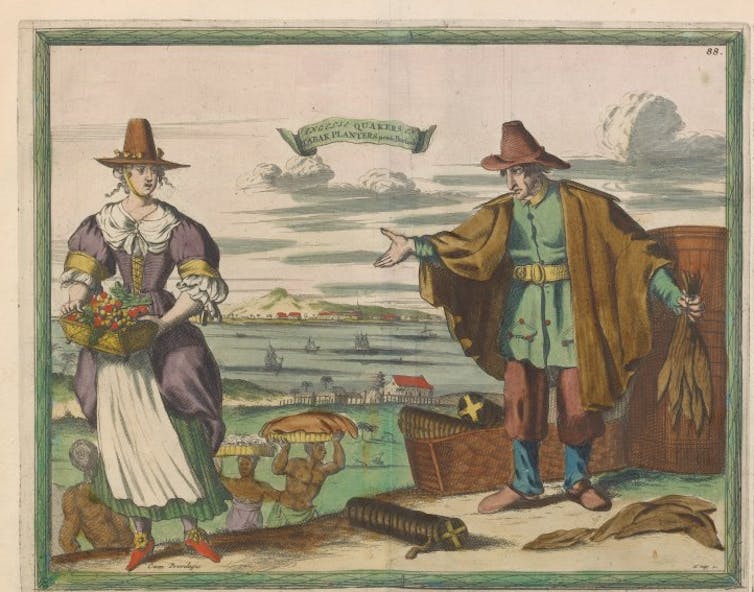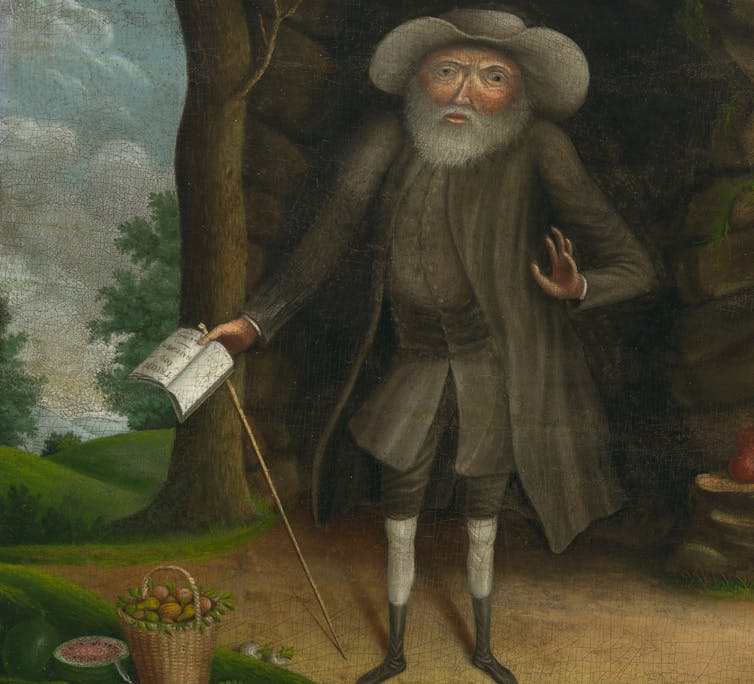by Adelle M. Banks, RNS | Feb 22, 2022 | Commentary, Faith & Work, Headline News |
WASHINGTON (RNS) — The Rev. Melech E.M. Thomas attended two seminaries and graduated from the second, a historically Black theological school, in 2016.
That academic journey has put him in the pulpit of an African Methodist Episcopal Church in North Carolina.
But his pursuit of a Master of Divinity degree also left him about $80,000 in debt.
“The tuition was less, but I still had to live,” he said, describing other seminary-related costs after his transfer from Princeton Theological Seminary to the Samuel DeWitt Proctor School of Theology at Virginia Union University. “I’m in seminary full time. And I got to make sure I’m paying rent, that I’m eating, all those other expenses.”
Thomas traveled to the nation’s capital in early February for a meeting with other graduates, leaders and students of Black theological schools to discuss possible solutions for the disproportionately high debt of Black seminarians.
Delores Brisbon, leader of the Gift of Black Theological Education & Black Church Collaborative, said it’s important for leaders to understand the sacrifices being made by students who pursue seminary degrees in historically Black settings.
“We need to address this issue of debt,” she said, opening the collaborative’s two-day event, “and determine what we’re going to do about it.”
According to data from the Association of Theological Schools, debt incurred by Black graduates in the 2019-2020 academic year averaged $42,700, compared with $31,200 for white grads.
Data shows 30% of Black graduates in the 2020-2021 academic year had debt of $40,000 or more, compared with 11% of white graduates.
Thomas, 34, said his debt, necessary to achieve his degree and gain ordination, has led to a church appointment that “pays me enough to pay rent,” but not his other living expenses. Yet, Thomas said he knows he’s in a better situation than some other graduates of historically Black seminaries.
“I’m grateful,” he said. “But it’s extremely tough.”
The collaborative includes five Black theological schools — Hood Theological Seminary, Interdenominational Theological Center, Payne Theological Seminary, Samuel DeWitt Proctor School of Theology and Shaw University Divinity School. Lilly Endowment Inc. has given three grants between 2014 and 2020 totaling $2.75 million to the In Trust Center for Theological Schools to help facilitate coordination and increased mutual support between the schools, including the recent meeting about student debt.
The Rev. Jo Ann Deasy, co-author of a 2021 report on the ATS Black Student Debt Project, told the dozens gathered at a Washington hotel that the project came about as researchers discovered how “Black students were just burdened by debt more than any others.”
She said ATS is seeking to help change perceptions about what the project calls the “financial ecology of Black students” as seminarians seek training to become religious leaders, churches hope to hire them and theological institutions consider expanding financial networks to aid them.
“We’re trying to help people shift their understanding of finances from really individual responsibility to a broader systemic understanding of how finances operate in our communities and in our churches,” she said. “This is just a part of that shift toward understanding that it’s not the students’ fault but that this is a bigger issue that we need to address together.”
The report described “money autobiographies” of students who sought financially stable circumstances as they attended theological schools, whether historically Black, white or multiracial.
“They noted the disparities in financial support, particularly from congregations and denominations, between themselves and their White colleagues, a disparity that was often not seen or acknowledged by their peers or the institutions they attended,” the report states.
The average annual tuition for an M.Div. — before any scholarships are considered — is $13,100 for free-standing Protestant schools and $12,500 for Protestant schools related to a college or university. Chris Meinzer, senior director and COO of ATS, said that, on average, it takes students about four years to complete an M.Div. degree.
Seminary graduates who attended the Washington event spoke of having few scholarship options and having to take out loans to pay for expenses including or beyond tuition.
“It’s the cost of being enrolled and the cost of student fees along with your books,” said the Rev. Jamar Boyd II, senior manager of organizational impact at the Samuel DeWitt Proctor Conference, which supports African American ministries. Depending on the class and the number of books required, it could amount to as much as $600 to $700 in a semester, said Boyd, 27, a graduate of Virginia Union University’s theological school.
“If you’re a full-time student taking three or four classes, that’s a paycheck,” he said.
Minister Kathlene Judd, a theologian in residence at an Evangelical Lutheran Church in America congregation in North Carolina, said she eventually chose debt over the mental stress of working, studying and supporting a family at the same time.
She worked in information technology as she went through seminary and continues that career as she pays off her debts after originally hoping to pay for seminary without taking out loans.
“If I’m being fully transparent, I had no idea what I was getting myself into,” said Judd, 38, who graduated from Shaw University Divinity School in 2020.
She said it was a “big decision” to borrow money to continue the education she felt God called her to pursue.
“But honestly, it came down to my mental and emotional health,” she said.
Many students and grads, like Judd, are at least bivocational.
The Rev. Lawrence Ganzy Jr. is in his fourth year at Hood Theological Seminary, where he attends a track that allows him to pastor an African Methodist Episcopal Zion Church in South Carolina while taking classes on Friday nights and Saturdays. During the week, he’s an admissions officer for Strayer University.
Prior to seminary, his work through the Carolina College Advising Corps, a government program for University of North Carolina-Chapel Hill graduates to counsel low-income high school students, helped him afford the start of his theological studies.
“That paid for my first year of seminary,” said Ganzy, 26. “Then when I got to the next year, that money was gone.”
Keynoting the opening night of the collaborative meeting, the Rev. Michael Brown, president of Payne Theological Seminary in Wilberforce, Ohio, pointed to the portion of the Lord’s Prayer that says “forgive us our debts as we forgive those who are indebted to us” in the Gospel of Matthew.
“Debt keeps us chained to the past and it doesn’t open up possibilities for the future,” he said, “and so the idea of the forgiveness of debt in the Lord’s Prayer is that it releases you to do things for God.”
During the event, graduates spoke of the additional financial struggles they faced, such as debt affecting their credit scores as they try to purchase a car and escalating rent, sometimes in historically Black neighborhoods that have been gentrified.
Brisbon pointed out that Black theological schools may have small endowments and may not get support from their alumni, in part because of the often-lower salaries received by their graduates.
“Black preachers may love their school as much as somebody else but they can’t give money that they don’t have,” she said.
The ATS report noted that a 2003 Pulpit & Pew study found that, on average, Black clergy salaries were about two-thirds those of white clergy. In a 2019 Christian Century essay, scholars noted that a study by the Samuel DeWitt Proctor Conference found that one-third of Black pastors believed they were “fairly and adequately compensated as a professional” while 67% said that they had “particular financial stress” at that current time.
The Rev. Leo Whitaker, executive minister of the Baptist General Convention of Virginia, told Religion News Service that some clergy in the more than 1,000 churches in his Black state denomination are often “bivocational if not trivocational” to make ends meet, especially when they are located in a region like the state’s Northern Neck rather than the city of Richmond.
Whitaker suggested to collaborative members that they look to U.S. government programs that offer debt forgiveness to educators and doctors who serve in needy communities, noting they should offer the same for seminary grads. He hopes collaborative members will discuss his idea with seminary and education officials.
“You’re serving a stressed community and you’re financially stressed yourself without the ability to make the necessary funds and it’s not about them having a choice of where they choose to serve,” he said, noting that Methodist bishops appoint clergy and Baptist clergy go where congregations have called them to serve. “In ministry our location is not always assigned to us by choice.”
Bishop Teresa Jefferson-Snorton of the Christian Methodist Episcopal Church, a historic Black denomination, said laypeople and clergy may not be aware of the sacrifices made by seminarians and recent graduates as they pay seminary tuition that is far more than what she paid 40 years ago.
“Most of our highly organized denominations don’t really have a grasp on what they are actually doing or not doing to support theological education,” Jefferson-Snorton added. “Although in many cases we promote it, we encourage it. But we don’t resource it and I think that needs to be brought to the attention of the church.”
RNS receives funding from Lilly Endowment Inc. RNS is solely responsible for this content.
by Omar Suleiman, RNS | Feb 8, 2022 | Commentary, Headline News, Social Justice |
(RNS) — Over the past week, much of the world was gripped by the heartbreaking story of Rayan, a 5-year-old boy who had plunged 104 feet into a well in Morocco. For five days thousands of people went to Tamorot in northern Morocco to help and pray, while around the world hundreds of millions followed closely. On Saturday evening (Feb. 5), hopes rose as he was pulled out of the deep shaft, but the jubilation was short-lived as the news broke within minutes that he had passed away.
Images of Rayan, his grieving mother and the heroic rescue effort united much of the world around what practically no one could find disagreeable: the hope that an innocent child caught in devastating circumstances could be reunited in health and safety with his worried parents.
For many of us as Rayan departed this world, we still pray for that reunion in the next life, and are moved to contribute to his grieving family in any way that we can.
For readers of Scripture, Rayan’s time in the well brought to mind the story of Joseph, the son of Jacob (peace be upon them), in the Quran, similar to that of the Bible. In the Quran, however, Joseph’s time in the well is a focal point of an entire chapter that offers comfort to those facing a trial.
Rayan, certainly, was not thrown into the Moroccan well by envious brothers, as Joseph was. Poor infrastructure seems to have been the main reason for his death, and the fact that no one was to blame made it easy to gather everyone in sympathy.
But I can’t help but wonder while watching this unfold how differently the story of Rayan would be told, or if it would be told at all, had he been a child stuck in a crater caused by an airstrike from a military drone. Or if he was a refugee who had slipped to his death in a camp.
Figures are not for a blameless child to die due to unnecessary war. Some 1,600 children died or were maimed in Afghanistan every year for two decades, according to Save the Children, which also estimates that 25 children die or are injured each day in conflicts around the world.
Cruelty to a child is one of the few things that can still elicit a pure human reaction from most of us. It’s why the mother of Emmett Till wanted to leave the casket open after her son’s brutal murder. In her own words, “I wanted the world to see what they did to my boy.” By doing so, she sparked the civil rights movement.
It’s why the image of baby Alan Kurdi, a Syrian refugee who washed ashore at a Turkish resort, shocked the world in a way that statistics never could. It’s why the image of over 60 Palestinian children on the cover of The New York Times did more to humanize the plight of the Palestinian people than almost all the coverage of the bombardment of Gaza combined. And it’s why the image of young Jakelin Caal, who died trying to cross the border into the United States, shook so many of us to our core.
We despise the unjust death of children, but when children die in war we feel complicit in that injustice, either through our participation in harmful policies or silence about the consequences. Many of the powers directly responsible for children’s deaths are aware of our disgust and will try to thwart coverage or sympathy that may lead to direct challenges of their use of force.
We’re told to sympathize with the child who resembles Joseph. It’s far harder for us to see ourselves as the brothers who threw him into the well.
While the brothers of Joseph were driven by envy, we’re driven by greed or apathy. The reason doesn’t matter to the child. Our repentance is to do what we can for that child, and the other children who need our help.
Rayan was a beautiful, innocent child who brought out the best of his countrymen, and the purest of sentiments from around the world. How do we then reckon with the harm of so many unholy wars and man-made tragedies in which so many beautiful children die in ugly ways? What is the work we need to do so that they may live in dignity and calm?
(The views expressed in this opinion piece do not necessarily reflect those of Religion News Service.)
by Shannon Dingle | Feb 4, 2022 | Commentary, Headline News |
(RNS) — “I agree online church is an intriguing idea to include families and individuals affected by disability,” I said, leaning back in my chair. “But I don’t think it can work.”
I spoke those words in 2009, in a casual conversation with other inclusive ministry leaders about what it might look like for churches to be truly accessible to disabled people. I wasn’t opposed to online church at the time. I simply couldn’t imagine how to make it work.
The ideal model, we were convinced, would be hybrid church, building online communities linked with traditional in-person churches, so attendance could be fluid and connections built in ways that included people of all ages, abilities and availability to be present in the same space as the church building. Well-equipped megachurches with large budgets already had the technical abilities to stream services and host online discussion groups. Most churches were and still are small and faithful, though, with resources more limited.
To implement a hybrid model, we knew we would need a system of training, funding and support. We lacked all three. But even if we had the money, time and expertise to do it all, we would need buy-in. We needed leaders to believe disabled people deserved to be fully included in the church, as people like anyone else rather than as service projects to pity, perpetual children to patronize, or pets to pat on the head.
At that time, every American church with a robust inclusive ministry had one thing in common: The pastor had a child or a grandchild diagnosed with a disability. Churches didn’t change to become welcoming unless leaders loved one specific disabled person first. I didn’t know what it would take for more churches to say yes to even considering inclusive online services.
A decade later, COVID-19 proved to be the catalyst for such change. Churches began shifting to online models en masse, to keep people safe from a deadly virus. As weeks passed and we could see that this new normal wasn’t leaving anytime soon, church leaders began moving their faith communities online.
Disabled people who had begged for more accessible models of ministry, who had been told online church wasn’t possible, watched as their requested accommodations became realities. While we were excited to finally be able to engage with our churches through new programs, our pain was undeniable.
Jesus tells a parable, recorded in Luke 15 and Matthew 18, known as the parable of the lost sheep. In it, a shepherd has 100 sheep and one goes missing. The good shepherd goes after the one lost sheep and brings it back to the other 99 with a spirit of joy and celebration. But is that a cute story we read like pure fiction, or do we believe it?
Consider, for a moment, that the story is one disabled person and 99 abled people, and instead of a field, the setting is a church. When one needed to be able to participate in the community of believers from home or a hospital using technology, we in the church stuck with the 99. Those virtual church options that were called impossible for the one became possible when COVID-19 safety measures, like not meeting in person, were necessary for the remaining 99 as well. The accommodation was never impossible for the one. We made a choice that the 99 abled people were worthy of such an option becoming available, which revealed what we believed about the one disabled person: They alone were not worthy, not in how church worked prior to the pandemic.
Now, as churches reopen their in-person services, the inclusive hybrid model can finally work, right?
Yes, but some people don’t want it that way. This past weekend Tish Harrison Warren, a priest in the conservative sect of Anglican churches and an opinion writer for The New York Times, argued for the end of online church, even though she acknowledged the practice would re-marginalize some members who have been included by online worship connection.
As for whether or not online church should be an option, it already is and it’s not going away. The logistics of Communion practices, for example, are worthy of consideration and planning, but let’s consider and plan those. Should online church happen? No matter your answer, it is happening.
This debate extends to how we classify relationships as well; is a person you only know online a friend, or does friendship require physical proximity? Communal embodied experiences within friendships or worship don’t require physical proximity. Conversely, I have been physically present in church services without anything being embodied beyond the most superficial appearance.
My personal preference will always include in-person engagement with the people I call my church, usually in the building we also call church. I understand other people have their own preferences, and I see no benefit in weighing whose disabilities or circumstances justify each choice. As with other accommodations for disabled people, abled people will benefit as well: Shift workers and single parents and displaced individuals, be it by choice or necessity, can all benefit from worship models including online possibilities.
According to the Centers for Disease Control and Prevention, 26% of adults are disabled. One in 10 adults age 18 and older — and double that for those 65 and older — have a disability that impacts one or more areas of functioning enough to require support from others. We know COVID-19 disproportionately harms people with medical vulnerabilities, and some people who need to stay home to avoid COVID also stay home for part or all of flu season, in addition to hospitalizations, surgeries, sleep disorders and other circumstances preventing church attendance.
The most important fact we keep overlooking in these debates, though, is that disabled people are more likely to have those conditions that make COVID-19 the riskiest: three times more likely to have heart disease, twice as likely to have diabetes and the most likely to be immunodeficient by nature or due to medications. Relatedly, disabled people experience higher rates of poverty, less stable employment and lower rates of both driving and having access to a vehicle to drive than abled people do — all of which hinder church attendance as well.
Given those statistics, we aren’t talking about one lost sheep but more like 10 or 20 lost out of every 100. With online church, disabled people — including me and my family — were welcomed to church in more ways and more often than ever before. Let’s keep that up rather than shouting, “Hey, Jesus, we’re gonna take that one you brought back and throw them to the elements and predators! We’re going back to the way it was.”
We have the framework in place to continue to welcome disabled people who worship from home, even as in-person services become safer. The choice is easy. Keep welcoming us.
(Shannon Dingle is a Christian writer and activist. The views expressed in this commentary do not necessarily represent those of Religion News Service.)

